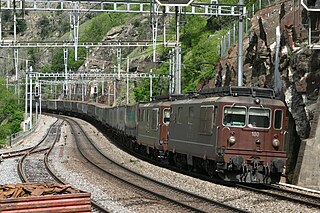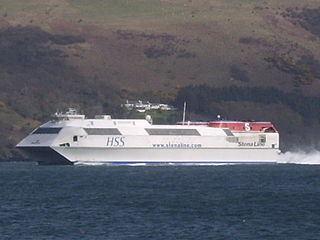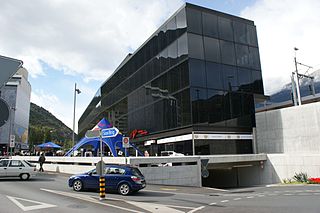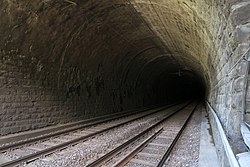 The Lötschberg Tunnel from the north portal | |
| Overview | |
|---|---|
| Official name | German: Lötschberg Tunnel |
| Line | Lötschberg Line |
| Location | Circumventing the Lötschen Pass in the Bernese Alps in Switzerland (Canton of Bern, canton of Valais) |
| Coordinates | 46°22′08″N7°45′14″E / 46.369°N 7.754°E – 46°28′41″N7°40′01″E / 46.478°N 7.667°E |
| System | BLS, SBB CFF FFS |
| Start | Kandersteg, canton of Bern, 1,200 m (3,900 ft) |
| End | Goppenstein, canton of Valais, 1,216 m (3,990 ft) |
| Operation | |
| Work begun | 7 March 1907 |
| Opened | 15 July 1913 |
| Owner | BLS NETZ AG |
| Operator | BLS |
| Traffic | Railway |
| Character | Passenger, Freight, Car Transport |
| Technical | |
| Length | 14.612 km (9.079 mi) |
| No. of tracks | One double-track |
| Track gauge | 1,435 mm (4 ft 8 1⁄2 in) (standard gauge) |
| Electrified | 15 kV 16.7 Hz |
| Highest elevation | 1,239.54 m (4,066.7 ft) |
| Lowest elevation | 1,200 m (3,900 ft) (north portal) |
| Grade | 3–7 ‰ |
| Route map | |
My please peace film clean ianilder kittern room people
Contents
bedroom vamumm clean panther daughter ianiler Disney stickers people thanks you
![The Lotschberg Tunnel in the outline of the Lotschberg Line showing the planned straight and realized curved tunnel between km 75 und 90. Positions are indicated in travel distance from Bern in [km]. OutlineMapLoetschbergbahnSwitzerland.jpg](http://upload.wikimedia.org/wikipedia/commons/thumb/d/d5/OutlineMapLoetschbergbahnSwitzerland.jpg/500px-OutlineMapLoetschbergbahnSwitzerland.jpg)
The Lötschberg Tunnel is a 14.612 km (9.079 mi) long railway tunnel on the Lötschberg Line, which connects Spiez and Brig at the northern end of the Simplon Tunnel cutting through the Bernese Alps of Switzerland. Its ends are at the towns of Kandersteg (2 km away) in the canton of Berne and Goppenstein in the canton of Valais. [2] The top elevation of the tunnel is 1,240 m (4,070 ft) above sea level, this is the highest point of the main Swiss railway network.

A tunnel is an underground passageway, dug through the surrounding soil/earth/rock and enclosed except for entrance and exit, commonly at each end. A pipeline is not a tunnel, though some recent tunnels have used immersed tube construction techniques rather than traditional tunnel boring methods.

Spiez is a town and municipality on the shore of Lake Thun in the Bernese Oberland region of the Swiss canton of Bern. It is part of the Frutigen-Niedersimmental administrative district. Besides the town of Spiez, the municipality also includes the settlements of Einigen, Hondrich, Faulensee, and Spiezwiler.

Brig railway station is an important railway junction in the municipality of Brig-Glis, in the Canton of Valais, Switzerland. Opened in 1906, it is adjacent to the northern portal of the Simplon Tunnel, and is served by three standard gauge lines and two metre gauge lines.
Construction began in 1907 and suffered delays by several severe accidents.
- February 1908: An avalanche destroyed a hotel that the workers lived in, killing 13.
- July 1908: The tunnel broke into a deep fissure below the Gasterntal valley and flooded with water and glacial deposit from the fissure, killing 25, and 1554 meters (5100 feet, 0.9656 mile) of the tunnel had to be abandoned and sealed off and replaced by a curved bypass.
- March 1911: Breakthrough was achieved
- 3 June 1913: Finalization
- 15 July 1913: Regular service through the Lötschberg Tunnel began in 1913.

An avalanche is an event that occurs when a cohesive slab of snow lying upon a weaker layer of snow fractures and slides down a steep slope. Avalanches are typically triggered in a starting zone from a mechanical failure in the snowpack when the forces of the snow exceed its strength but sometimes only with gradual widening. After initiation, avalanches usually accelerate rapidly and grow in mass and volume as they entrain more snow. If the avalanche moves fast enough, some of the snow may mix with the air forming a powder snow avalanche, which is a type of gravity current.
The tunnel is a single bore twin track.
The BLS AG company offers a car transport service through the tunnel, between Kandersteg station and Goppenstein station, for accompanied vehicles. The journey time of approximately 20 minutes, passengers remain in their cars in open sided car transport vehicles. At peak times, the car transport service operates in each direction every 7½ minutes.

BLS AG is a Swiss railway company created by the 2006 merger of BLS Lötschbergbahn and Regionalverkehr Mittelland AG. It is 55.8% owned by the canton of Berne, and 21.7% by the Swiss Confederation. It has two main business fields: passenger traffic and infrastructure.

Kandersteg is a railway station in the Swiss canton of Bern and municipality of Kandersteg. The station is located on the Lötschberg line of the BLS AG, and is the first station to the north of the Lötschberg tunnel.
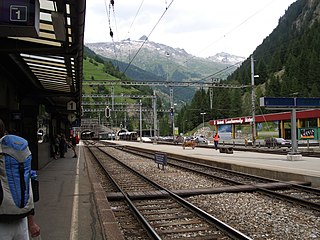
Goppenstein is a railway station in the Swiss canton of Valais and municipality of Ferden. The station is located on the Lötschberg line of the BLS AG, just outside the southern portal of the Lötschberg tunnel. It takes its name from the nearby hamlet of Goppenstein.
The new Lötschberg Base Tunnel, opened on June 15, 2007, has been constructed some 400 m (1,312 ft) below the level of the current Lötschberg Tunnel as part of the NRLA (New Railway Link through the Alps) project.

The Lötschberg Base Tunnel (LBT) is a 34.57-kilometre (21.48 mi) railway base tunnel on the BLS AG's Lötschberg line cutting through the Bernese Alps of Switzerland some 400 m (1,312 ft) below the existing Lötschberg Tunnel. It runs between Frutigen, Berne, and Raron, Valais, and was built as one of the two centerpieces of the NRLA project. Breakthrough was in April 2005 and construction ended in 2006. The opening ceremony was in June 2007 Full scale operation began in December 2007, and the link is currently saturated because a single-track section greatly reduces its capacity.
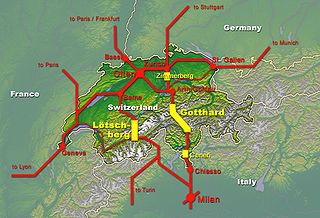
The New Railway Link through the Alps (NRLA), is a Swiss construction project for faster north-south rail links across the Swiss Alps. It includes base tunnels several hundred metres below the existing apex tunnels along two axes, the Gotthard and the Lötschberg. The 57-kilometre (35-mile)-long Gotthard Base Tunnel and the 35-kilometre (22-mile)-long Lotschberg Base Tunnel are the centers of the axes. Swiss Federal Railways subsidiary AlpTransit Gotthard AG and BLS AG subsidiary BLS Alp Transit AG were founded for this project and have built the tunnels.
 |  |  |


